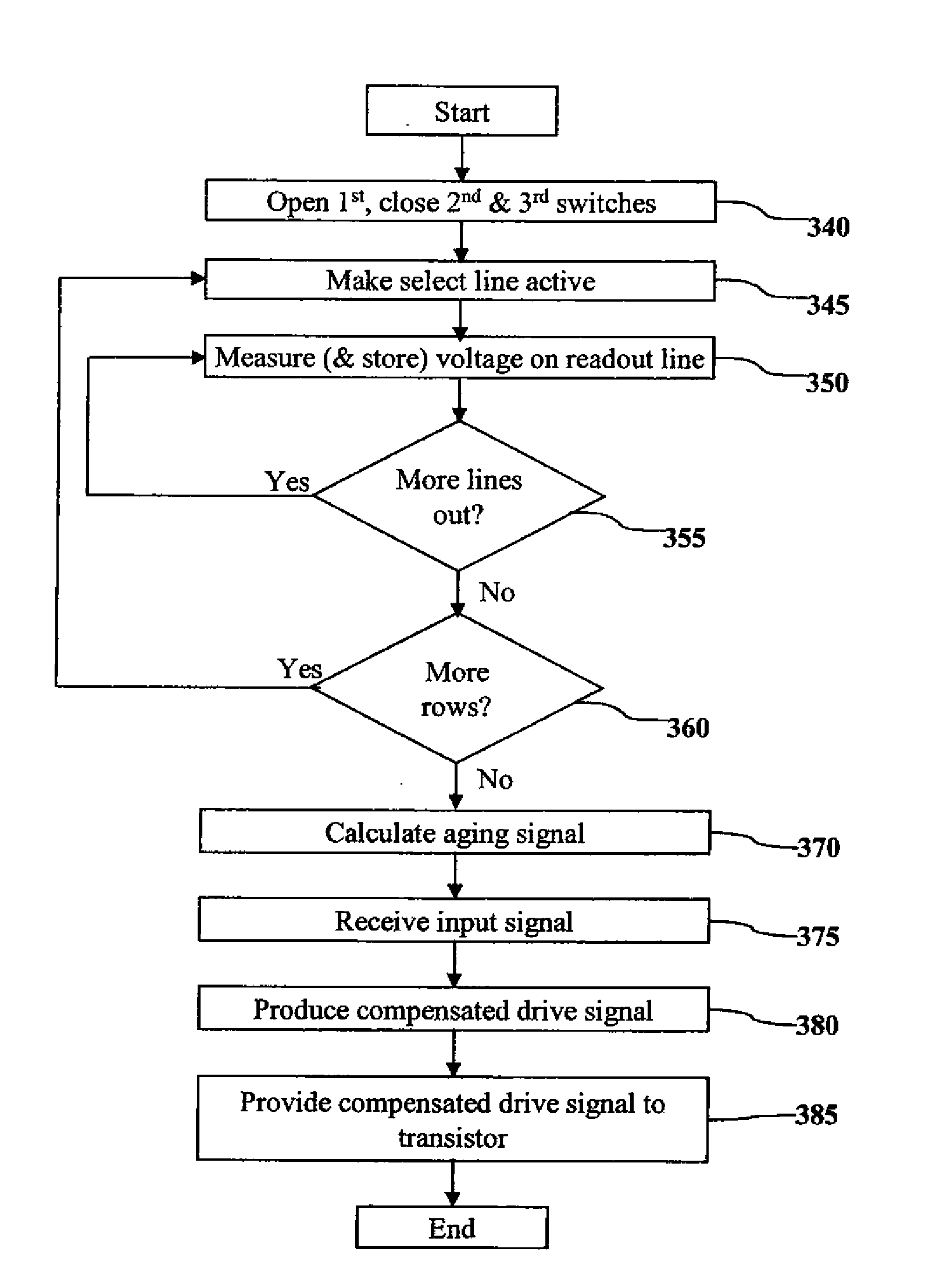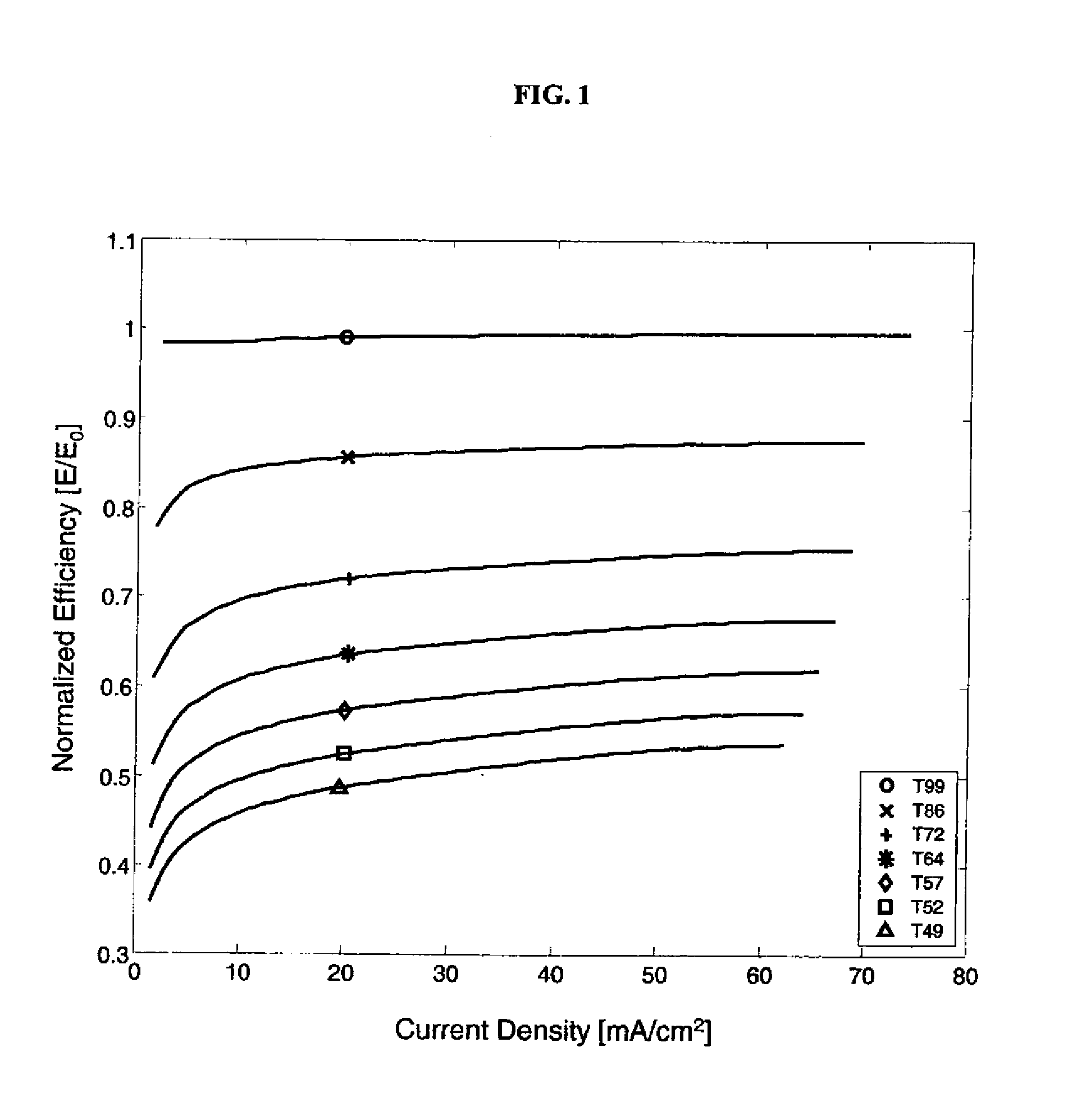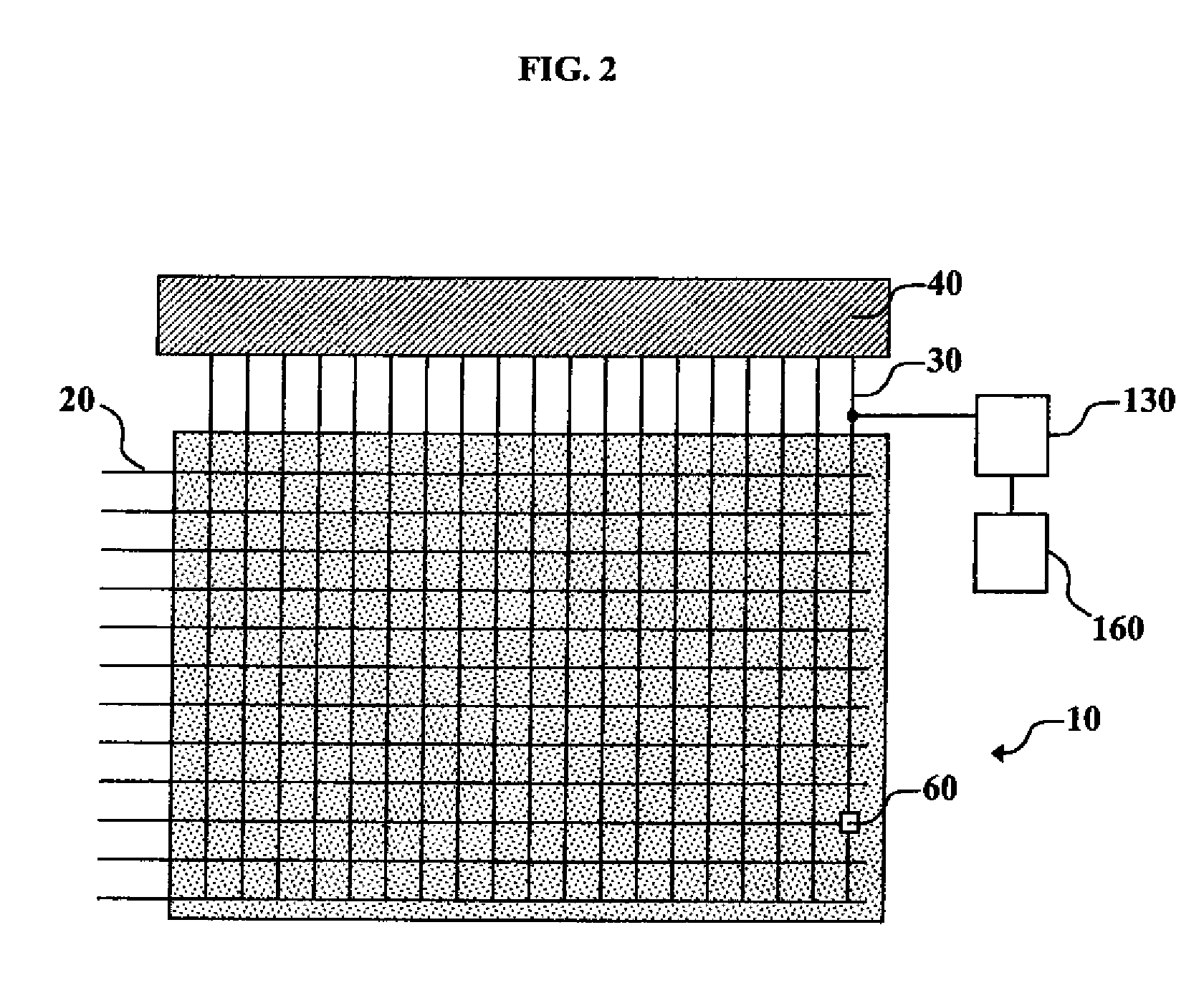Electroluminescent display with efficiency compensation
a technology of efficiency compensation and electroluminescent display, which is applied in the direction of electroluminescent light sources, static indicating devices, instruments, etc., can solve the problems of reducing the lifetime of the display, differential color aging, and a display whose display life, and achieves the effect of simple voltage measurement circuitry
- Summary
- Abstract
- Description
- Claims
- Application Information
AI Technical Summary
Benefits of technology
Problems solved by technology
Method used
Image
Examples
Embodiment Construction
[0034]Turning now to FIG. 2, there is shown a schematic diagram of one embodiment of an electroluminescent (EL) display that can be used in the practice of the present invention. EL display 10 comprises an array of a predetermined number of EL subpixels 60 arranged in rows and columns. EL display 10 includes a plurality of row select lines 20 wherein each row of EL subpixels 60 has a row select line 20. EL display 10 includes a plurality of readout lines 30 wherein each column of EL subpixels 60 has a readout line 30. Each readout line 30 is connected to a third switch 130, which selectively connects readout line 30 to current source 160 during the calibration process Although not shown for clarity of illustration, each column of EL subpixels 60 also has a data line as is well-known in the art. The plurality of readout lines 30 is connected to one or more multiplexers 40, which permits parallel / sequential readout of signals from EL subpixels, as will become apparent. Multiplexer 40 ...
PUM
 Login to View More
Login to View More Abstract
Description
Claims
Application Information
 Login to View More
Login to View More - R&D
- Intellectual Property
- Life Sciences
- Materials
- Tech Scout
- Unparalleled Data Quality
- Higher Quality Content
- 60% Fewer Hallucinations
Browse by: Latest US Patents, China's latest patents, Technical Efficacy Thesaurus, Application Domain, Technology Topic, Popular Technical Reports.
© 2025 PatSnap. All rights reserved.Legal|Privacy policy|Modern Slavery Act Transparency Statement|Sitemap|About US| Contact US: help@patsnap.com



